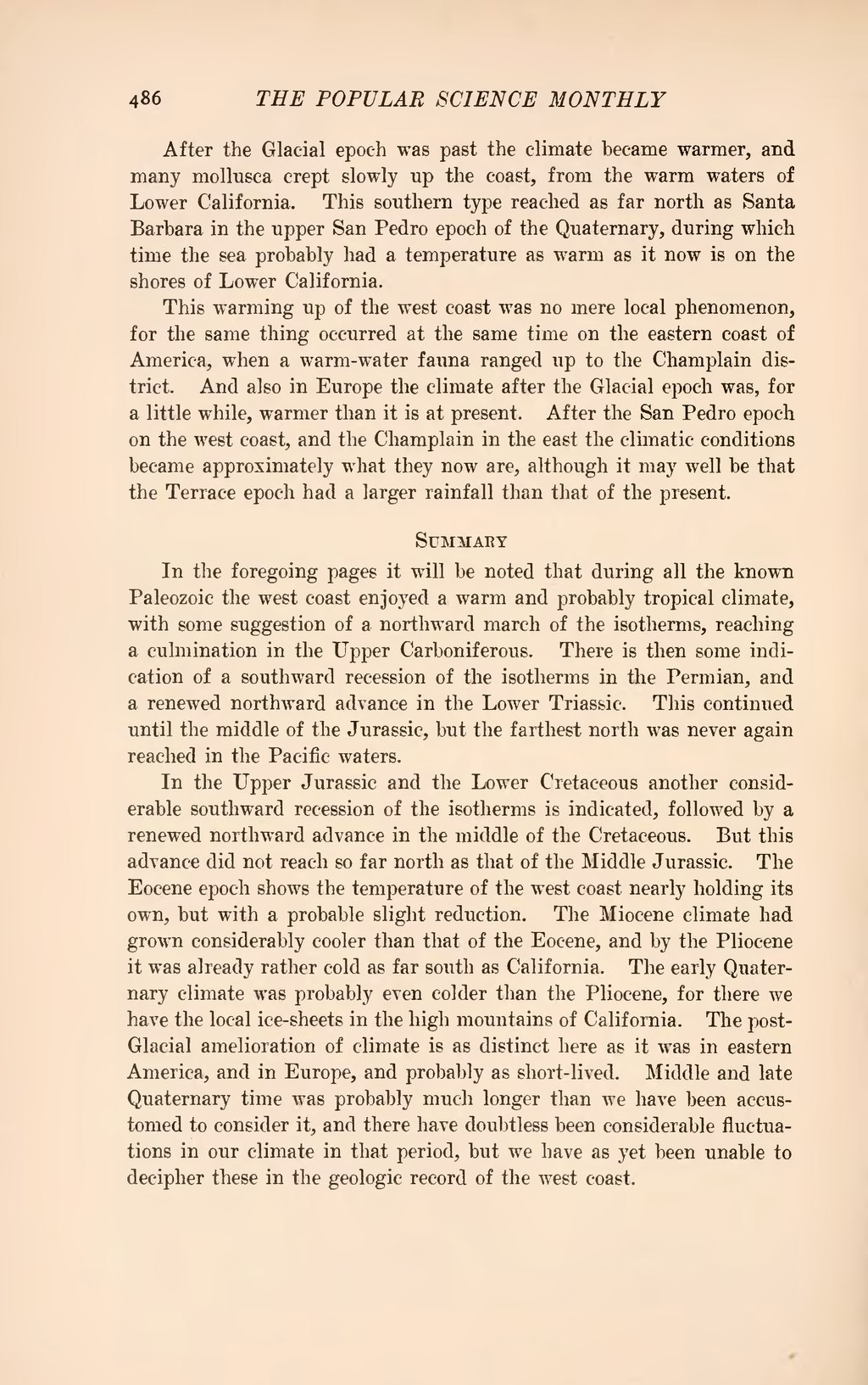After the Glacial epoch was past the climate became warmer, and many mollusca crept slowly up the coast, from the warm waters of Lower California. This southern type reached as far north as Santa Barbara in the upper San Pedro epoch of the Quaternary, during which time the sea probably had a temperature as warm as it now is on the shores of Lower California.
This warming up of the west coast was no mere local phenomenon, for the same thing occurred at the same time on the eastern coast of America, when a warm-water fauna ranged up to the Champlain district. And also in Europe the climate after the Glacial epoch was, for a little while, warmer than it is at present. After the San Pedro epoch on the west coast, and the Champlain in the east the climatic conditions became approximately what they now are, although it may well be that the Terrace epoch had a larger rainfall than that of the present.
Summary
In the foregoing pages it will be noted that during all the known Paleozoic the west coast enjoyed a warm and probably tropical climate, with some suggestion of a northward march of the isotherms, reaching a culmination in the Upper Carboniferous. There is then some indication of a southward recession of the isotherms in the Permian, and a renewed northward advance in the Lower Triassic. This continued until the middle of the Jurassic, but the farthest north was never again reached in the Pacific waters.
In the Upper Jurassic and the Lower Cretaceous another considerable southward recession of the isotherms is indicated, followed by a renewed northward advance in the middle of the Cretaceous. But this advance did not reach so far north as that of the Middle Jurassic. The Eocene epoch shows the temperature of the west coast nearly holding its own, but with a probable slight reduction. The Miocene climate had grown considerably cooler than that of the Eocene, and by the Pliocene it was already rather cold as far south as California. The early Quaternary climate was probably even colder than the Pliocene, for there we have the local ice-sheets in the high mountains of California. The post-Glacial amelioration of climate is as distinct here as it was in eastern America, and in Europe, and probably as short-lived. Middle and late Quaternary time was probably much longer than we have been accustomed to consider it, and there have doubtless been considerable fluctuations in our climate in that period, but we have as yet been unable to decipher these in the geologic record of the west coast.

